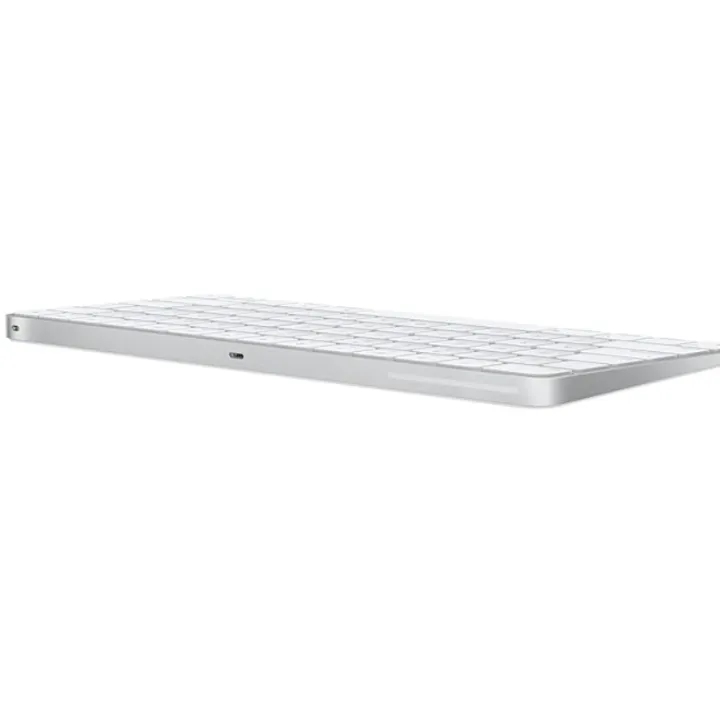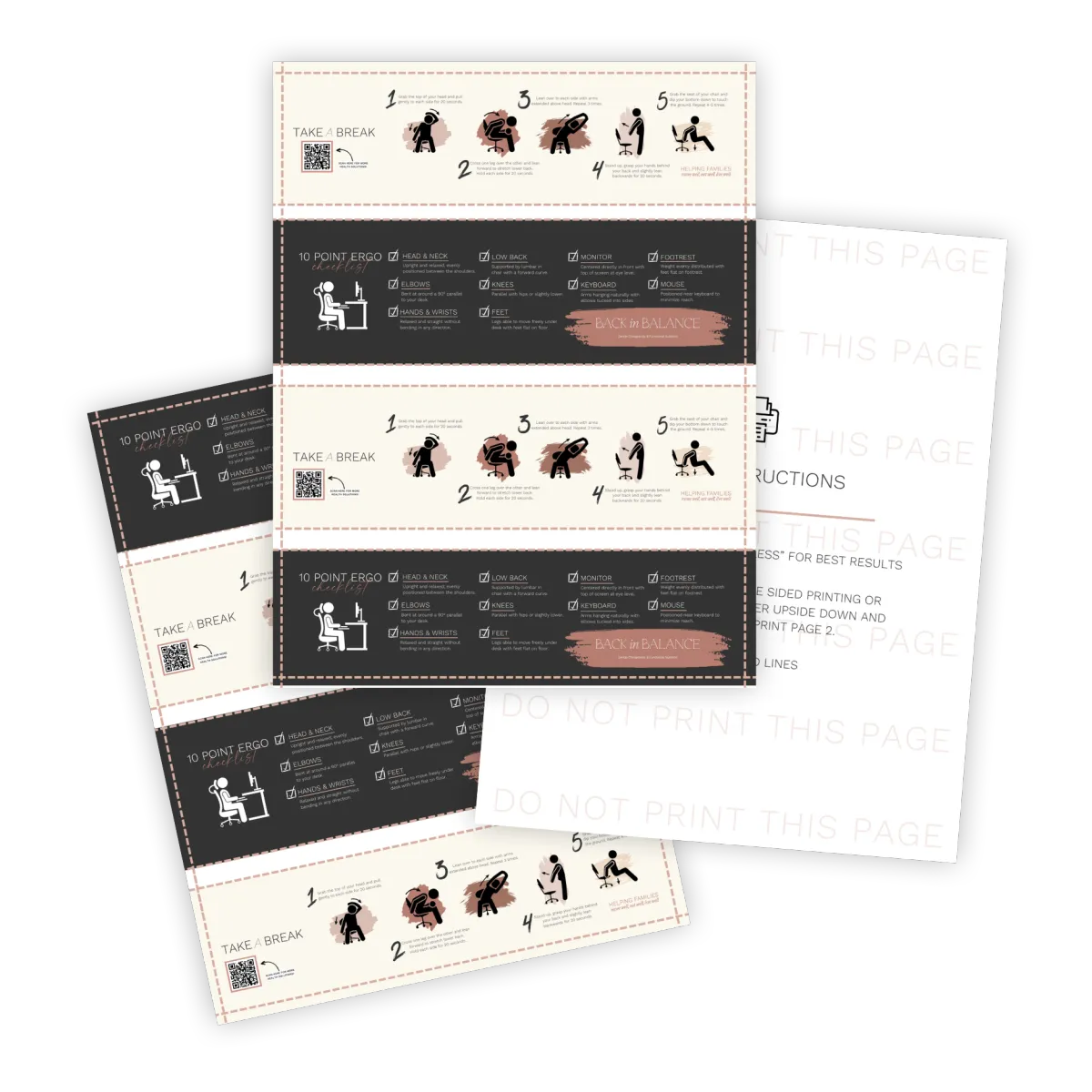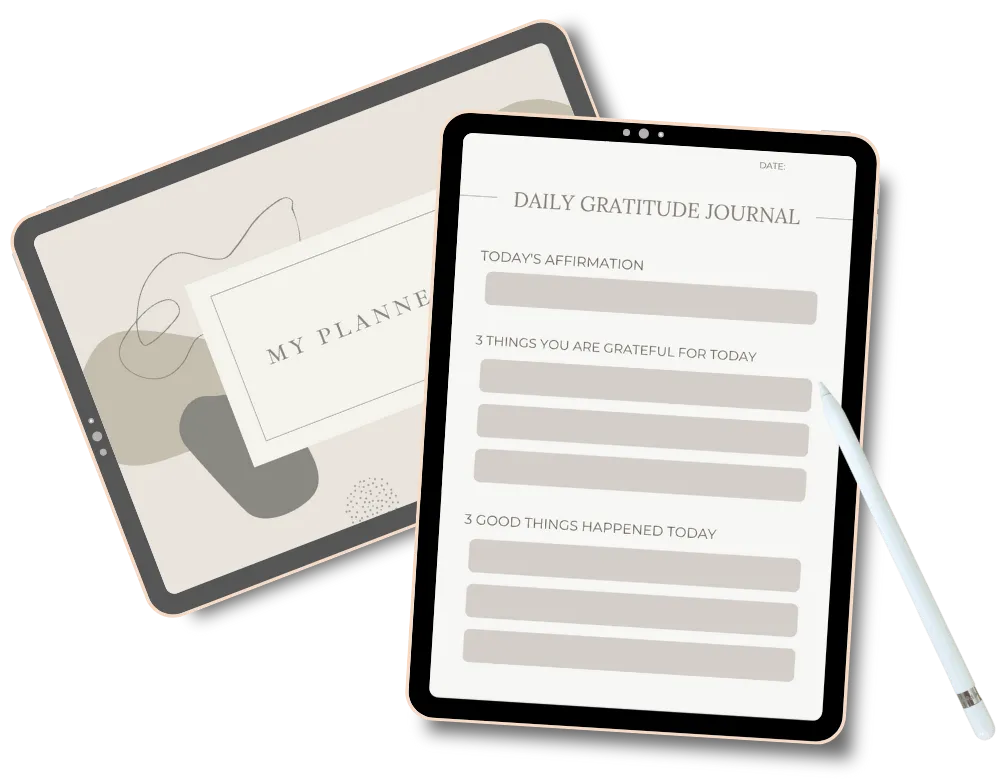

Apple Trackpad

Apple Keyboard


Are you wanting to get pregnant or expecting a little one? Get out free checklist today. This Ultimate Fertility and Pregnancy Checklist gives you everything you need to know for optimized health.

Unlock the secrets to managing stress with our Overcoming Stress Mini Course. Learn how to leverage your nervous system to reduce anxiety and improve well-being. Join today for quick, effective stress relief strategies. Perfect for busy individuals seeking a healthier, stress-free life.

Are you wanting to get pregnant or expecting a little one? Get out free checklist today. This Ultimate Fertility and Pregnancy Checklist gives you everything you need to know for optimized health.

Do you ever feel stiff and sore from sitting all day? If so, download our printable bookmark and walk through the 10 point ergonomic checklist to help you get back in balance from anywhere!





3 Pillars Every Woman 35+ Needs for a Healthy Pregnancy, TTC & Postpartum Recovery
If you’re 35 or older and trying to conceive, pregnant, or navigating postpartum, you’ve probably noticed your body has different needs than it did in your twenties. The truth? Your health in this stage of life depends on more than just eating well or staying active.
I’m Dr. Anjali, founder of Back In Balance, and I help women like you strengthen the three pillars that truly shape your fertility, pregnancy, and postpartum recovery: structure, function, and emotion. When all three are supported, your energy improves, your body recovers faster, and your hormones communicate more clearly—giving you the best chance at feeling strong and capable during this life-changing season.
In this post, I’ll walk you through each pillar, why it matters, and how you can start building them up today.
Structure: How Your Body Holds Stress
Your posture, spinal alignment, and physical habits can dramatically affect your energy, fertility, and comfort during pregnancy and postpartum. Maybe you’ve had “tech neck” from hours on your phone or laptop, or you’ve dealt with nursing mother’s neck in the early days of feeding your baby.
Your body physically holds onto stress, and when your structure is off, it can limit nerve communication from your brain to the rest of your body. This isn’t just about aches and pains—structural issues can impact how well your organs function, how balanced your hormones are, and even how much energy you have to get through the day.
Function: How Well Your Body Works Inside
Structure and function are deeply connected. Your nervous system sends messages from your brain to every tissue and organ, and if that communication is disrupted, your body’s performance suffers.
This includes digestion, detoxification, hydration, and hormone balance. For example, if your gut is inflamed or your liver is sluggish, your hormones can’t flow and communicate optimally. That means your mood, fertility, and recovery can all take a hit.
Even something as simple as not sweating during exercise—something some people are proud of—can signal that your body isn’t detoxing effectively. Good function means your internal systems are working smoothly so you can feel your best.
Emotion: How You Handle Stress and Change
Your emotional regulation is just as important as your physical health. Stress isn’t always bad—it can come from exciting life changes like a new baby or a long-awaited pregnancy—but how you respond matters.
Do you shut down? Snap in frustration? Or feel completely overwhelmed? A regulated nervous system helps you bounce back from challenges, adapt to change, and meet your day with patience and clarity. And when you model that regulation for your kids, they learn those skills too.
Why All Three Pillars Matter Together
When structure, function, and emotion are all strong and connected, your body works efficiently, your nervous system is regulated, and you feel capable, calm, and resilient. But if even one pillar is struggling, your body has to work harder to compensate. That can lead to burnout, fertility challenges, increased pregnancy discomfort, and more intense postpartum symptoms.
If you’re ready to start supporting all three areas, grab my free Fall Family Reset Checklist. In less than 10 minutes a day, you can create morning and evening routines that strengthen these pillars and set the foundation for better health—for you and your family.

3 Pillars Every Woman 35+ Needs for a Healthy Pregnancy, TTC & Postpartum Recovery
If you’re 35 or older and trying to conceive, pregnant, or navigating postpartum, you’ve probably noticed your body has different needs than it did in your twenties. The truth? Your health in this stage of life depends on more than just eating well or staying active.
I’m Dr. Anjali, founder of Back In Balance, and I help women like you strengthen the three pillars that truly shape your fertility, pregnancy, and postpartum recovery: structure, function, and emotion. When all three are supported, your energy improves, your body recovers faster, and your hormones communicate more clearly—giving you the best chance at feeling strong and capable during this life-changing season.
In this post, I’ll walk you through each pillar, why it matters, and how you can start building them up today.
Structure: How Your Body Holds Stress
Your posture, spinal alignment, and physical habits can dramatically affect your energy, fertility, and comfort during pregnancy and postpartum. Maybe you’ve had “tech neck” from hours on your phone or laptop, or you’ve dealt with nursing mother’s neck in the early days of feeding your baby.
Your body physically holds onto stress, and when your structure is off, it can limit nerve communication from your brain to the rest of your body. This isn’t just about aches and pains—structural issues can impact how well your organs function, how balanced your hormones are, and even how much energy you have to get through the day.
Function: How Well Your Body Works Inside
Structure and function are deeply connected. Your nervous system sends messages from your brain to every tissue and organ, and if that communication is disrupted, your body’s performance suffers.
This includes digestion, detoxification, hydration, and hormone balance. For example, if your gut is inflamed or your liver is sluggish, your hormones can’t flow and communicate optimally. That means your mood, fertility, and recovery can all take a hit.
Even something as simple as not sweating during exercise—something some people are proud of—can signal that your body isn’t detoxing effectively. Good function means your internal systems are working smoothly so you can feel your best.
Emotion: How You Handle Stress and Change
Your emotional regulation is just as important as your physical health. Stress isn’t always bad—it can come from exciting life changes like a new baby or a long-awaited pregnancy—but how you respond matters.
Do you shut down? Snap in frustration? Or feel completely overwhelmed? A regulated nervous system helps you bounce back from challenges, adapt to change, and meet your day with patience and clarity. And when you model that regulation for your kids, they learn those skills too.
Why All Three Pillars Matter Together
When structure, function, and emotion are all strong and connected, your body works efficiently, your nervous system is regulated, and you feel capable, calm, and resilient. But if even one pillar is struggling, your body has to work harder to compensate. That can lead to burnout, fertility challenges, increased pregnancy discomfort, and more intense postpartum symptoms.
If you’re ready to start supporting all three areas, grab my free Fall Family Reset Checklist. In less than 10 minutes a day, you can create morning and evening routines that strengthen these pillars and set the foundation for better health—for you and your family.
LOCATION
949 Sherwood Ave. #100
Los Altos, CA 94022
HOURS
Sunday 12pm - 4 pm
Monday 10am - 4pm
Tuesday 1pm - 4pm
Wed-Fri 10am - 4pm
Saturday Closed
CONTACT
© Back In Balance 2025 | FAQs | Terms & Conditions | Privacy Policy | Site Credit
©2025 Back In Balance Health. All Rights Reserved. – WEBSITE By: Danielle Damrell Creative Collective, Inc.

